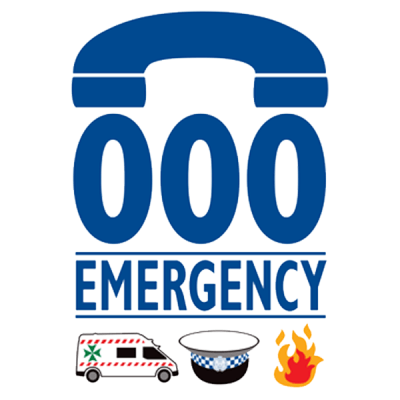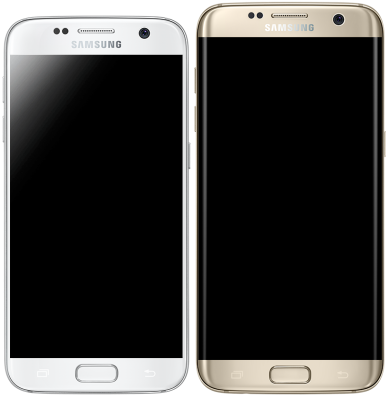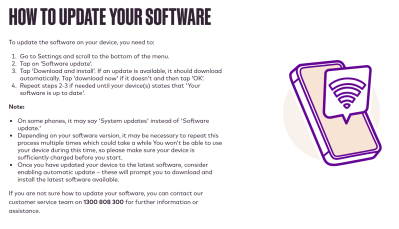We’re taught how to call emergency numbers from a young age; whether it be 911 in the US, 999 in the UK, or 000 in Australia. The concept is simple—if you need aid from police, fire, or ambulance, you pick up a phone and dial and help will be sent in short order.
It’s a service many of us have come to rely on; indeed, it’s function can swing the very balance between life or death. Sadly, in Australia, that has come to pass, with a person dying when their Samsung phone failed to reach the Triple Zero (000) emergency line. It has laid bare an obscure technical issue that potentially leaves thousands of lives at risk.
Peril

Australia’s Triple Zero emergency service becoming a hot-button issue. September 2025 saw widespread failures of emergency calls on the Optus network, an incident that was tied to at least three deaths of those unable to reach help. A series of further isolated cases have drawn more attention to edge case failures that have prevented people from reaching emergency services.
A bigger potential issue with the Triple Zero service has since bubbled up with the increased scrutiny on the system’s operation. Namely, the fact that a huge swathe of older Samsung smartphones cannot be trusted to successfully call 000 in an emergency. The potential issue has been on the radar of telcos and authorities since at least 2024. Since then, on November 13 2025, an individual in Sydney passed away after their phone failed to dial the emergency line. Their phone was using a Lebara SIM card, as managed by TPG and using the Vodafone network, when the incident occurred. Subsequent investigation determined that the problem was due to issues already identified with a wide range of Samsung phones.
The issue surrounds the matter of Australia’s shutdown of 3G phone service, which took place from 2023 to 2024. If you had a 3G phone, it would no longer be able to make any calls after the networks were shut down. Common sense would suggest that phones with 4G and 5G connectivity would be fine going forward. However, there was a caveat. There were a number of phones sold that offered 4G or 5G data connections, but could not actually make phone calls on these networks. This was due to manufacturers failing to implement Voice-over-LTE (VoLTE) functionality required to carry voice calls over 4G LTE networks. Alternatively, in some cases, the 4G or 5G handset could make VoLTE calls, but would fail to make emergency calls in certain situations.
Communication Breakdown
It all comes down to the way voice calls work on 4G and 5G. Unlike earlier 2G and 3G cellular networks, 4G and 5G networks are data only. Phone calls are handled through VoLTE, which uses voice-over-IP technology, or using Voice over NR (VoNR) in a purely 5G environment. Either way, the system is a data-based, packet-switched method of connecting a phone call, unlike the circuit-switched methods used for 2G and 3G calling.

The problem with this is that while 2G and 3G emergency calls worked whenever you had a tower nearby, VoLTE calling is more complex and less robust. VoLTE standards don’t guarantee that a given handset will be interoperable with all LTE networks, particularly when roaming. A given handset might only like IPv4, for example, which may be fine in its home region on its regular carrier. However, when roaming, or when doing an emergency call, that handset might find itself only in range of a different network’s towers, which only like IPv6, and thus VoLTE calling will fail. There are any number of other configuration mismatches that can occur between a handset and a network that can also cause VoLTE calling to fail.
Usually, when you’re in range of your phone’s home network with a modern 4G or 5G handset, you won’t have any problems. Your phone will use its VoLTE settings profile to connect and the emergency call will go through. After all, older models with no VoLTE support have by and large been banned from networks already. However, the situation gets more complex if your home network isn’t available. In those cases, it will look to “camp on” to another provider’s network for connectivity. In this case, if the phone’s VoLTE settings aren’t compatible with the rival network, the call may fail to connect, and you might find yourself unable to reach emergency services.
Specifically, in the Australian case, this appears to affect a range of older Samsung phones. Testing by telecommunications company Telstra found that some of these phones were unable to make Triple Zero emergency calls when only the Vodafone network was available. These phones will happily work when a Telstra or Optus network is available, but fallback to the Vodafone network has been found to fail. Research from other sources has also identified that certain phones can reach Triple Zero when using Telstra or Optus SIM cards, but may fail when equipped with a Vodafone SIM.
For its part, Samsung has provided a list of models affected by the issue. Some older phones, mostly from 2016 and 2017, will need to be replaced, as they will not be updated to reliably make emergency calls over 4G networks. Meanwhile, newer phones, like the Galaxy S20+ and Galaxy S21 Ultra 5G, will be given software updates to enable reliable emergency calling. Telecom operators have been contacting users of affected phones, indicating they will need to replace or upgrade as necessary. Devices that are deemed to be unable to safely make emergency calls will be banned from Australian mobile networks 28 days after initial notification to customers.
Broader Problem

This issue is not limited to just Australia. Indeed, European authorities have been aware of issues with VoLTE emergency calling since at least 2022. Many phones sold in European markets are only capable of making emergency calls on 2G and 3G networks, and could fail to reach emergency services if only 4G connections are available. This issue was particularly noted to be a risk when roaming internationally, where a handset sold in one country may prove inoperable with VoLTE calling on a foreign network.
Some blame has been laid on the loose standardization of the VoLTE standard. Unlike 2G and 3G standards, global interoperability is pretty much non-existent when it comes to phone calls. This wasn’t seen as a big issue early on, as when 4G devices first hit the market, 2G and 3G phone networks were readily available to carry any voice calls that couldn’t be handled by VoLTE. However, with 2G and 3G networks shutting down, the lack of VoLTE standardization and interoperability between carriers has been laid bare.
While Australia is currently tangling with this issue, expect it to crop up in other parts of the world before long. Europe is currently working towards 2G and 3G shutdowns, as our other jurisdictions, and issues around roaming functionality still loom large for those taking handsets overseas. Ultimately, end users will be asking a very simple question. If 2G and 3G technologies could handle emergency calls on virtually any compatible network around the world, how did it go so wrong when 4G and 5G rolled around? Old networks existed as a crutch that avoided the issue for a time, but they were never going to last forever. It surely didn’t have to be this way.